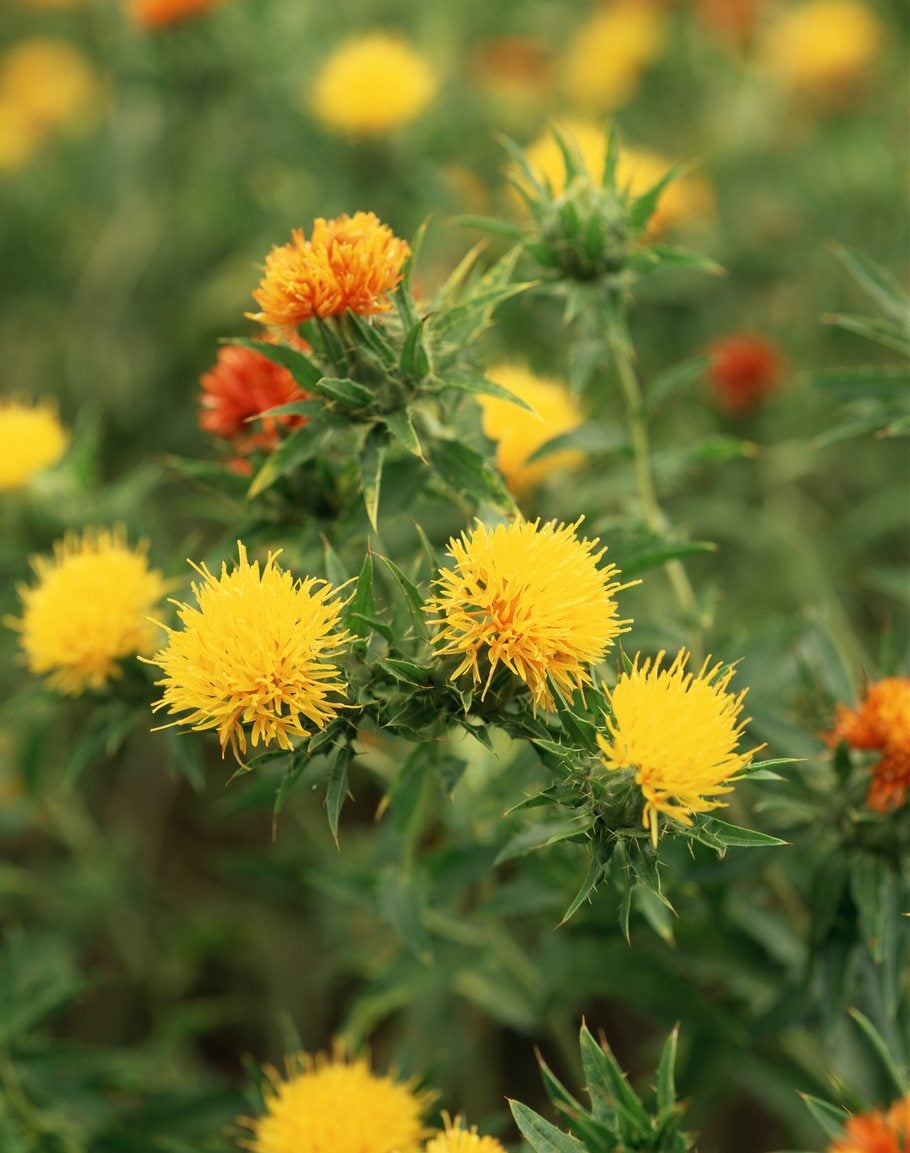Safflower Information – How To Grow Safflower Plants In The Garden

Safflower (Carthamus tinctorius) is predominantly grown for its oils which are not only heart healthy and used in foods, but also in a variety of other products. Safflower’s growing requirements are uniquely suited for arid regions. Farmers can often be found growing safflower between crops of winter wheat. The following article contains safflower information on how to grow and care for safflower plants.
Safflower Information
Safflower has an extremely long taproot which enables it to reach deep into the soil to retrieve water. This makes safflower a perfect crop for arid farming areas. Of course, this deep rooting for water uptake does deplete the available water in the soil, so sometimes the area will need to lay fallow for up to 6 years to replenish the water levels after growing safflower. Safflower also leaves very little crop residue, which leaves fields open to erosion and is susceptible to several diseases. That said, the demand from our heart-healthy nation is such that the price garnered is well worth growing safflower as a cash crop.
How to Grow Safflower
The ideal growing requirements for safflower are well-drained soils with good water retention, but safflower isn’t picky and will grow in coarse soil with inadequate irrigation or rain. It doesn’t like wet feet, however. Safflower is seeded in early to late spring. Plant seeds ½ inch (1.5 cm.) deep in rows that are 6-12 inches (15-30.5 cm.) apart in a prepared firm bed. Germination takes place in about one to two weeks. Harvesting occurs about 20 weeks from planting.
Safflower Care
Safflower usually does not need additional fertilization at least in the first year of growing because the long taproot is able to reach and extract nutrients. Sometimes a supplemental nitrogen-rich fertilizer will be used. As mentioned, safflower is drought tolerant so the plant does not need much in the way of supplemental water. Keep the safflower growing area free from weeds that compete for water and nutrients. Monitor and control for pest infestation, especially in the early part of the growing season when they can decimate a crop. Disease is most common during the rainy season when fungal diseases may be a problem. Many of these diseases can be managed through the use of disease-resistant seeds.
Sign up for the Gardening Know How newsletter today and receive a free copy of our e-book "How to Grow Delicious Tomatoes".

Amy Grant has been gardening for 30 years and writing for 15. A professional chef and caterer, Amy's area of expertise is culinary gardening.
